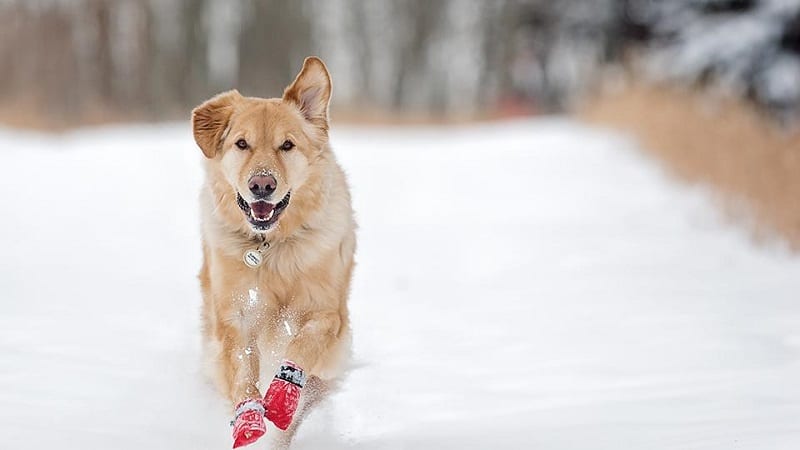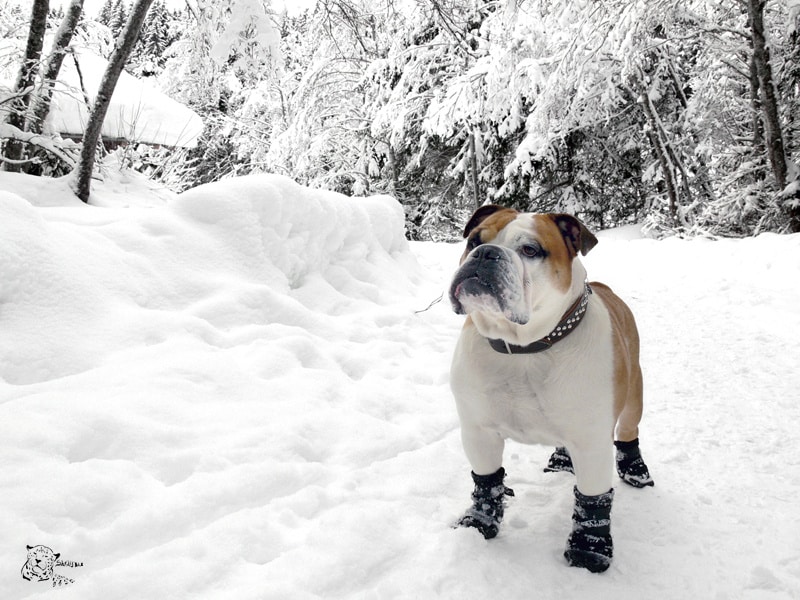
As winter blankets the world in a layer of snow and ice, it brings with it a special set of challenges for our furry companions. While we often think about keeping our dogs warm during this chilly season, it's equally important to safeguard their paws from the cold, abrasive surfaces, and potentially harmful substances they encounter.
In this comprehensive guide, we will explore various methods and products to protect your dog's paws from snow and ice, and we'll also discuss how pet insurance can provide peace of mind in case of unexpected winter-related health issues.
Understanding the Winter Hazards for Your Dog's Paws

Before we delve into the ways to protect your dog's paws during the winter, it's essential to understand the specific hazards they face:
- Cold Temperatures:
Prolonged exposure to cold surfaces can lead to frostbite and discomfort for your dog. Their paws, being in direct contact with the ground, are particularly vulnerable.
- Snow and Ice Accumulation:
Snow can accumulate between your dog's paw pads and fur, leading to discomfort and potential injury. Ice can also form between their toes, causing pain and limping.
- Chemicals and Salt:
Many municipalities use salt or chemicals to melt ice on roads and sidewalks. While effective at melting ice, these substances can irritate your dog's paws and are often toxic if ingested.
- Sharp Objects:
Hidden beneath the snow and ice, there may be sharp objects like broken glass or debris that can injure your dog's paws if stepped on.
- Dry Air and Cracked Pads:
Dry indoor air, a common occurrence in winter, can cause your dog's paw pads to become dry and cracked, potentially leading to discomfort and infection.
Ways to Protect Your Dog's Paws
- Pet-Friendly Ice Melts:
When using ice melt products on your property, opt for pet-friendly alternatives. These products are less harmful to your dog's paws and health. After applying them, ensure the area is thoroughly cleaned and dried to prevent further paw exposure.
- Booties for Dogs:
Dog booties are a reliable option for protecting your dog's paws from cold surfaces, salt, and chemicals. They come in various sizes and styles to suit your dog's needs. Ensure a snug, but not too tight, fit for comfort.
- Paw Wax and Balms:
Paw wax and balms create a protective barrier over your dog's paw pads. They help prevent dryness, cracking, and irritation while providing insulation from cold surfaces. Apply these before each walk.
- Regular Paw Inspections:
After walks in wintry conditions, examine your dog's paws for signs of injury, ice buildup, or irritation. Remove any ice or debris between their toes and thoroughly dry their paws to prevent further damage.
- Avoid Icy Puddles:
Dogs are curious and may be tempted to step into icy puddles or ponds. Keep them away from frozen water bodies, as the ice may not be thick enough to support their weight.
- Trim Paw Fur:
Long hair between your dog's paw pads can trap snow and ice. Regularly trim this hair to reduce the risk of ice accumulation and paw irritation.
- Moisturize Paw Pads:
Keep your dog's paw pads moisturized with pet-safe paw balms or coconut oil. This helps prevent dryness and cracking.
- Durable Dog Toys:
Durable toys can help satisfy your dog's need to chew and exercise their jaws while indoors. Chew toys can also help keep them mentally engaged.
- Training and Mental Stimulation:
Winter is an excellent time to work on your dog's training and mental stimulation. Training sessions can provide exercise for their minds and maintain their obedience.
The Role of Pet Insurance in Winter Paw Care

Pet insurance is a crucial resource in ensuring the well-being of your dog, especially during the winter season. It offers financial protection and peace of mind, allowing you to provide the best care for your furry friend in case of winter-related health issues or accidents. Here's how pet insurance can support your dog's paw care and overall well-being:
- Coverage for Paw Injuries:
Accidents can happen during winter walks, and your dog's paws are vulnerable to injuries from icy surfaces or sharp objects. Pet insurance can cover the costs of treatment and veterinary care for these injuries.
- Chemical Exposure:
In case your dog's paws come into contact with harmful chemicals or salt, pet insurance can assist with the expenses associated with treatment and potential complications.
- Chronic Paw Conditions:
Some dogs may have pre-existing conditions that affect their paw health. Pet insurance ensures you can afford ongoing treatments and medications to manage these conditions, even during the winter months.
- Preventive Care:
Many pet insurance plans offer options for preventive care, including regular check-ups and vaccinations. Preventive care is essential to protect your dog from common ailments and ensure their overall health.
- Coverage for Dog-Friendly Activities:
Certain pet insurance policies can cover injuries or accidents that occur during dog sports, training classes, or other dog-friendly activities designed to keep your pet physically and mentally active during the winter.
Choosing the Right Pet Insurance
When selecting pet insurance for your dog's well-being, consider the following factors:
- Coverage Options:
Look for policies that cover a wide range of conditions, treatments, and emergencies, including those specific to paw injuries or winter-related issues.
- Deductibles and Premiums:
Compare deductible amounts and monthly premiums to find a policy that fits your budget. Keep in mind that a higher deductible may lead to lower monthly premiums, but it could result in higher out-of-pocket costs in case of an emergency.
- Reimbursement Percentage:
Different policies offer varying reimbursement percentages. Choose a policy that aligns with your financial preferences and provides the level of coverage your dog needs.
- Network of Providers:
Check if the insurance company has a network of preferred veterinarians, as this can make the claims process smoother and more convenient.










